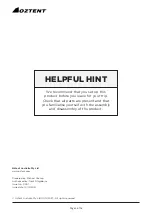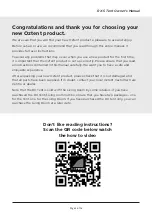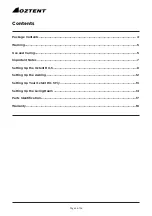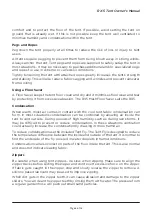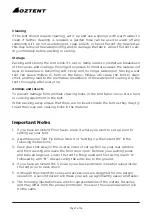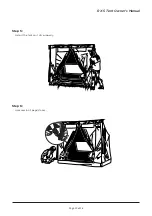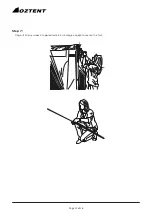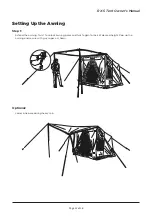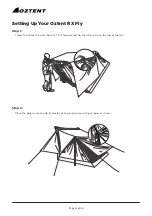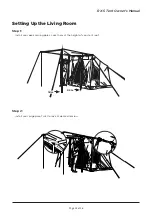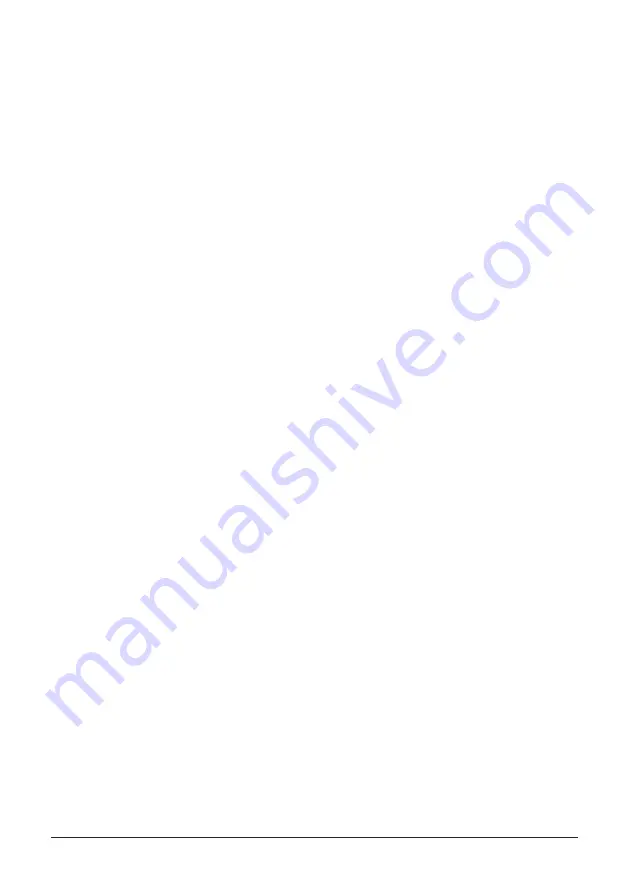
Page 6 of 18
RX-5 Tent Owner’s Manual
comfort and to protect the floor of the tent. If possible, avoid setting the tent on
ground that is already wet. If this is not possible keep the tent well ventilated to
minimize humidity and condensation within the tent.
Pegs and Ropes
Peg down the tent properly at all times to reduce the risk of loss or injury to tent
users.
All tents require pegging to prevent them from being blown away in strong winds.
Always anchor the tent. Tent pegs and ropes are supplied to safely setup the tent in
most situations. It may be necessary to purchase additional and/or specialized pegs
and ropes for use in extreme or varied soil conditions.
Tightly tensioning the tent with attached ropes greatly increases the tent’s strength
and stability. This will also reduce fabric sagging and wrinkles and prevent rainwater
from pooling.
Using a Floor Saver
A Floor Saver keeps the tent floor clean and dry and it minimises floor wear and tear
by protecting it from excessive abrasion. The RV5 MeshFloor Saver suits the RX5.
Condensation
When warm, moist air comes in contact with the cool tent fabric condensation can
form. In most situations condensation can be controlled by allowing air inside the
tent to vent outside. During periods of high humidity, such as during rain storms, it
may be difficult to prevent or reduce condensation. In these situations ventilation
could actually increase the condensation by drawing in more humid air.
To reduce condensation use the included Tent Fly. The Tent Fly is designed to reduce
the temperature difference between the inside and outside of the tent. It is normal to
find the underside of the fly covered in water droplets in humid conditions.
Condensation can also collect on parts of the floor inside the tent. This is also normal
and does not indicate leaking fabric.
Zippers
Be careful when using tent zippers. Go slow when zipping. Make sure to align the
zipper tracks before sliding the zipper and don’t exert excessive force on the zipper.
If fabric gets caught in the zipper, stop and slowly reverse the zipper to remove. A
silicone based lubricant may be used to improve zipping.
When dirt gets in the zipper teeth, it can cause abrasion and damage to the zipper
sliders. You can clean the zipper teeth by rinsing them with water. The pressure from
a regular garden hose will push out small sand particles.


